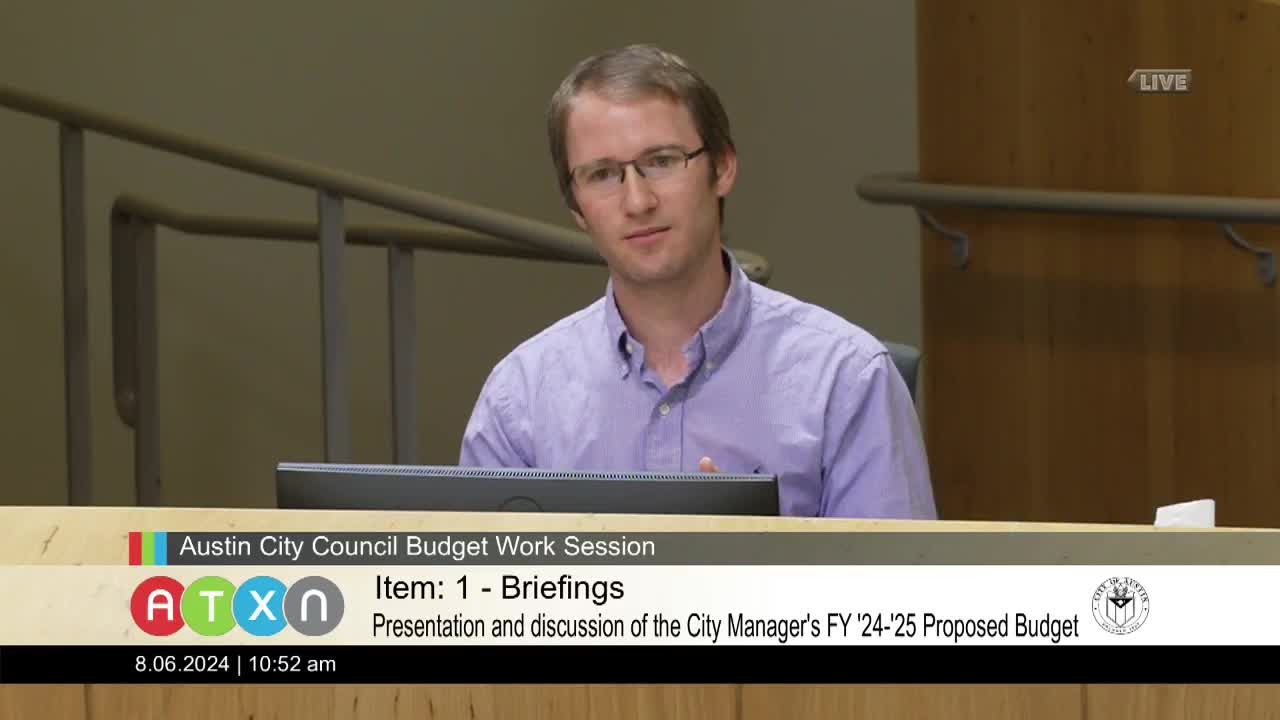Austin grapples with soaring homelessness crisis and solutions
August 06, 2024 | Austin, Travis County, Texas
This article was created by AI summarizing key points discussed. AI makes mistakes, so for full details and context, please refer to the video of the full meeting. Please report any errors so we can fix them. Report an error »

In a recent government meeting, officials discussed the pressing issue of homelessness in Austin, revealing critical statistics and strategies aimed at addressing the crisis. Gary Pollock from the Homeless Strategy Office clarified that the reported figures of approximately 6,000 to 7,000 unhoused individuals encompass the entire homeless population, including those in emergency shelters and transitional housing, but exclude those in rapid rehousing or permanent supportive housing.
The conversation highlighted the importance of understanding the inflow and outflow of individuals entering the homeless system. Pollock noted that recent outreach efforts have improved the recognition of homelessness, leading to increased estimates, though not all represent first-time homeless individuals. Matt Malika from the Ending Community Homelessness Coalition (ECHO) emphasized the need for supportive services, stating that there is a projected requirement for 210 supportive housing units by 2025, with additional units expected in 2026.
Council members were informed that approximately 11,000 households enter homelessness annually in Austin, with about 4,500 individuals identified as long-term homeless, requiring more complex support. The meeting underscored that Austin's chronic homeless population stands at around 30%, significantly higher than similar cities, which often report figures in the teens. This disparity is attributed to a lack of available housing options.
Officials also discussed the mismatch between available interventions and the number of individuals in need, with Austin reportedly having one of the lowest capacities for homeless services compared to other cities. The meeting concluded with a focus on prevention strategies to mitigate the inflow of households into homelessness, although specific budgetary details were yet to be finalized. The discussions reflect ongoing efforts to tackle homelessness in Austin, emphasizing the need for comprehensive support and resources to address this complex issue.
The conversation highlighted the importance of understanding the inflow and outflow of individuals entering the homeless system. Pollock noted that recent outreach efforts have improved the recognition of homelessness, leading to increased estimates, though not all represent first-time homeless individuals. Matt Malika from the Ending Community Homelessness Coalition (ECHO) emphasized the need for supportive services, stating that there is a projected requirement for 210 supportive housing units by 2025, with additional units expected in 2026.
Council members were informed that approximately 11,000 households enter homelessness annually in Austin, with about 4,500 individuals identified as long-term homeless, requiring more complex support. The meeting underscored that Austin's chronic homeless population stands at around 30%, significantly higher than similar cities, which often report figures in the teens. This disparity is attributed to a lack of available housing options.
Officials also discussed the mismatch between available interventions and the number of individuals in need, with Austin reportedly having one of the lowest capacities for homeless services compared to other cities. The meeting concluded with a focus on prevention strategies to mitigate the inflow of households into homelessness, although specific budgetary details were yet to be finalized. The discussions reflect ongoing efforts to tackle homelessness in Austin, emphasizing the need for comprehensive support and resources to address this complex issue.
View full meeting
This article is based on a recent meeting—watch the full video and explore the complete transcript for deeper insights into the discussion.
View full meeting
